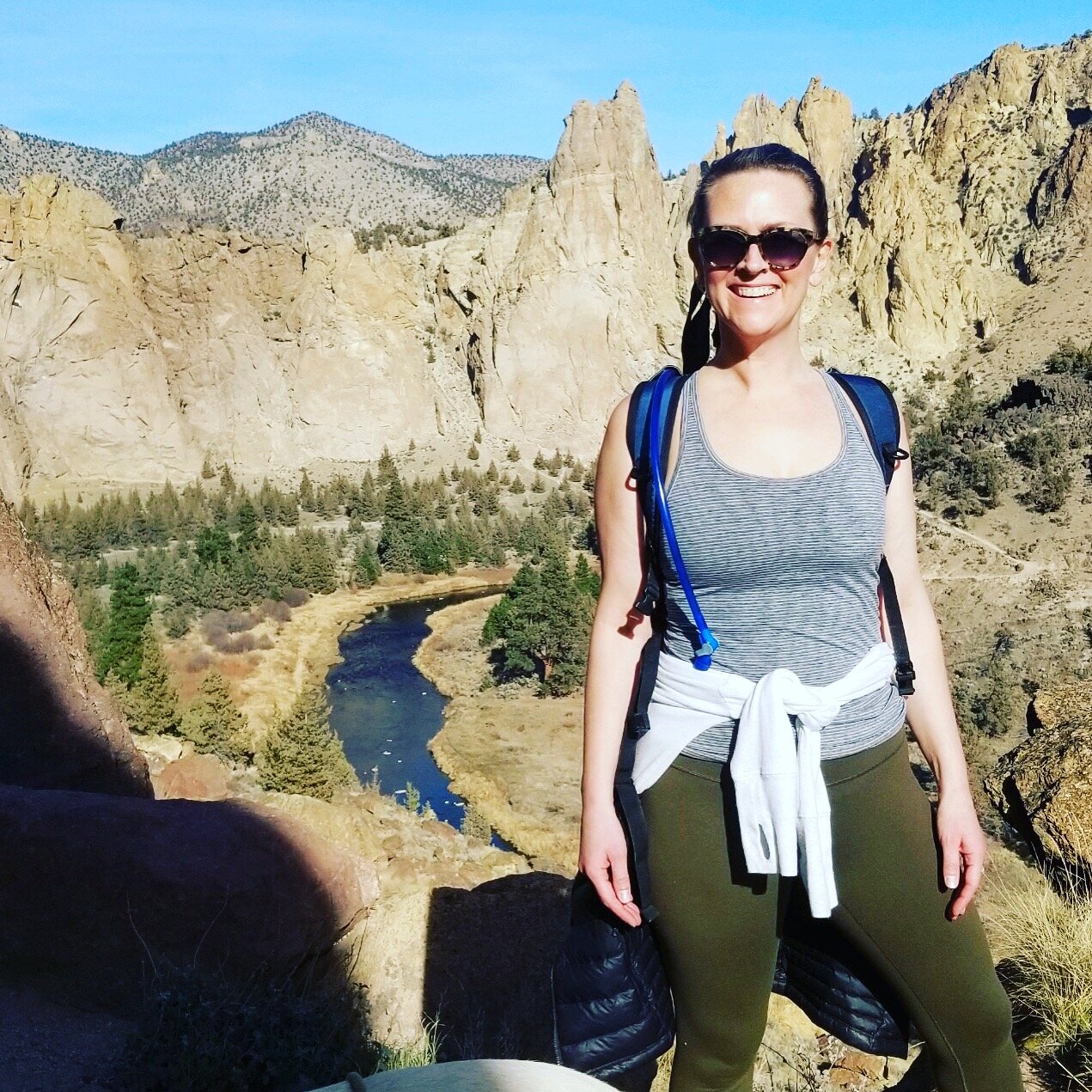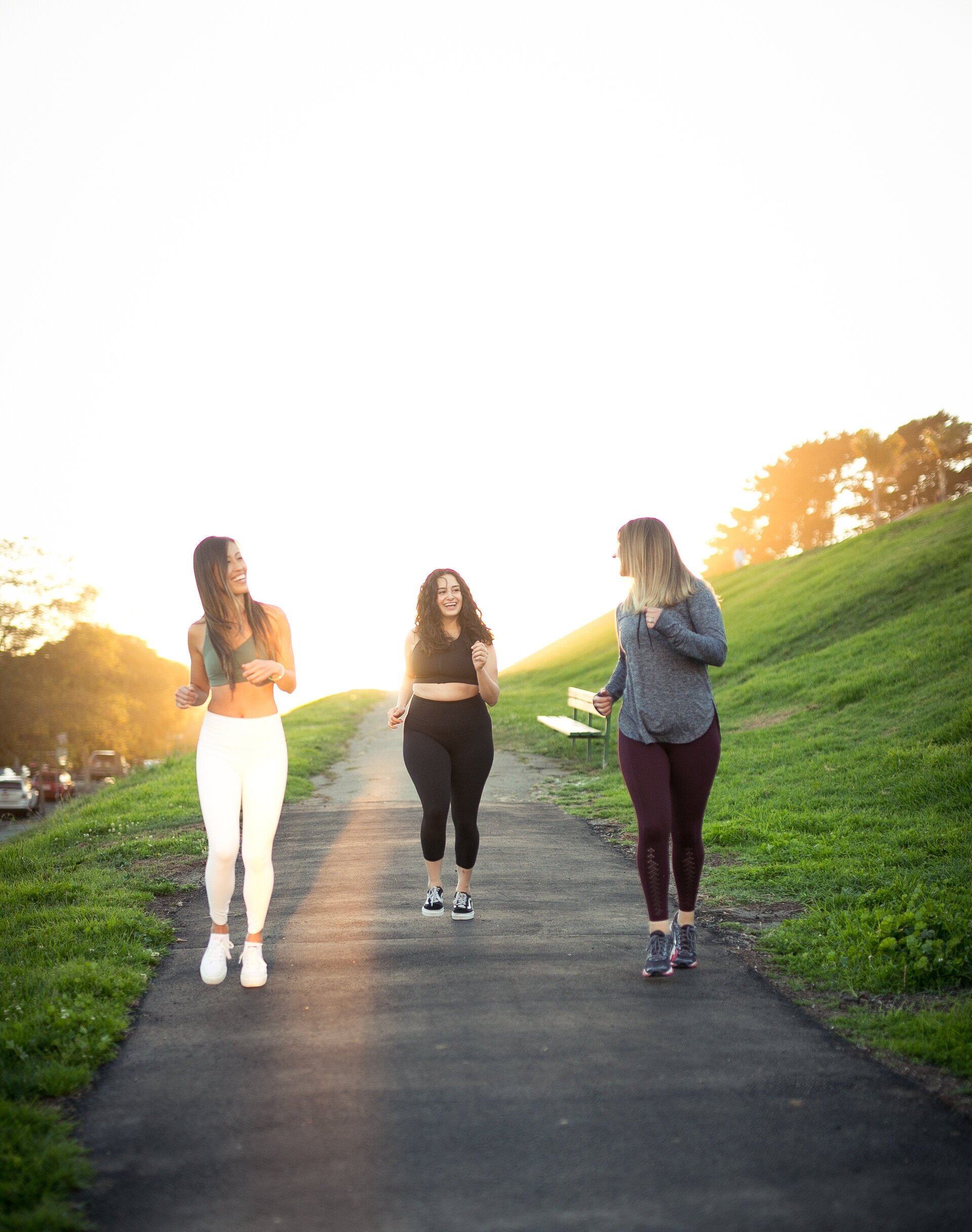RESHAPING YOUR RELATIONSHIP WITH EXERCISE
AND THIS IS NOW
In my early 30’s, a laundry list of diagnoses and invasive back surgery forced me to examine my priorities and how I was treating my body. The recovery from back surgery was long and painful and restricted my movements to simple things like walking and physical therapy. I wouldn’t wish it on anyone, but in a way I am grateful for the experience because it finally made me reshape my relationship with exercise.
Pain and restricted movement was the magical combination that made me realize, after 2 decades of punishing, rebelling, resisting and controlling through exercise, that exercise shouldn’t be about be undoing the past or fighting the present. It shouldn’t be another way to be unkind to ourselves. It should be about doing things we love that help us love ourselves.
Many of us forget too easily that it is a gift to be able to move even in the most basic ways; and in a world where many people don’t have the time, money or ability, it is a privilege to be concerned with exercise at all. Over the past 7 years, I’ve found that the below have helped me make the most of the gift and privilege of regular movement.
THAT WAS THEN
From a young age, distorted body image, disordered eating, depression and health issues complicated my relationship with exercise. Through my teens and twenties, exercise took many forms and meant many things to me, but it was seldom supportive of mental and physical health, as it should be.
As an overweight young woman uncomfortable in her skin, exercise was typically about working off binges (food or alcohol), and trying desperately to change a body I was ashamed of. Back then, I hadn’t found a form of movement I actually enjoyed, but I showed up day in and day out because I hoped that if I tried hard enough, I would wake up one day in a body I was actually proud to call my own.
In college, I started comparing my body and my activity levels to those around me, always falling woefully short by my own standards. Exercise was defined by my quest to look and move more like the tiny, taught college girls around me, and by my refusal to accept my soft, bread loving, Irish body.
In my twenties, when a back injury forced me to explore different forms of exercise, I finally discovered a few workouts that effectively transformed my shape and gave me the body I had been unsuccessfully striving for for years. Ironically enough, this was when my relationship with exercise crossed the line to harmful. Changing my body made me feel powerful and capable; it gave me a false sense of control I became pretty addicted to. I stopped listening to my body, failed to rest when I should have, didn’t fuel properly for my level of activity, compounded the stress I was already experiencing in other areas of my life and contributed to the accelerated decline of my osteoarthritic spine. I prioritized maintaining my figure, “working off” pizza and that false sense of control over too many other things that I now know matter far more.
10 tips for creating a healthy relationship with exercise:
SET YOUR INTENTION: Think a little bit about how you might reframe your relationship with exercise. If you loved and accepted yourself wholly, what might your intention behind exercising be? If you thought of movement as a declaration of self love and respect, what might it be then? A way to celebrate your body or your strength? A way to feel empowered or reclaim time for yourself?
EXPERIMENT WITH DIFFERENT KINDS OF MOVEMENT: So many of us pick the trendy workout or the one that makes lofty promises to change our bodies and our lives. Instead, consider trying a few different kinds of movement each month until you discover something you truly enjoy that is aligned with your intention. It may end up being one of those trendy workouts, (I do love a good Soul Cycle class), but at least you’ll know you’re investing your time and money in something you chose for all the right reasons.
MAKE SURE IT ACTUALLY FEELS GOOD: However you choose to move, make sure your body feels good (and safe!) while exercising. Not every form of exercise is good for every body. If you don’t do well with heat, hot yoga might not be for you and that’s ok! It’s best to consider and honor any limitations you might have based on injuries, age, pre-existing conditions and even preference. It simply isn’t worth ignoring your intuition and physical cues only to end up miserable, or worse, injured and out of commission.
GIVE IT A REST: Learn to listen to your body’s call for rest or gentler movement. Whether you’re fighting off a bug, depleted from a stressful week or feeling awful due to PMS, let your body guide you towards what kind of movement is right for you (if any) on any given day. It’s ok to swap out cycling class for a walk or Barry’s bootcamp for restorative yoga. As a culture, we are inclined to “push through” moments of “weakness” or discomfort, but that isn’t always the smartest thing for your mental and physical health when it comes to exercise.
EXPLORE DIFFERENT ENVIRONMENTS: Give yourself the opportunity to explore a few different indoor and outdoor environments. We often forget how affected we are by the smells, sights and sounds around us, and working out is no exception. After years of trying large gyms, small studious and various outdoor activities, I continue to be amazed by how much my experience (and comfort) shifts in different environments. If you’re going to make a habit out of exercise, you might as well find your happy place!
DON’T IGNORE THE HUMAN ELEMENT: The energy and attitude of the people and/or teachers around you influence both your overall experience and performance. Don’t be afraid to move on from a studio, teacher or “fit fam” if they’re not helping you create a positive, healthy and happy relationship with exercise.
MAKE IT MEANINGFUL: Exercise doesn’t have to just be about sweating out last night’s wine or supporting your cardiovascular health. Most people that have a positive and enduring relationship with exercise find ways to make it more meaningful. I personally love that working out keeps me more connected to me body and it’s needs; some people use exercise to tap into their intuition or spirituality. I have many clients that use it as time to bond with family or friends. Especially if you struggle with consistency or enjoying movement, this tip is for you!
MAKE IT FUN: Yes, I said it. Exercise can be fun! If you’re dreading your workout before you go and nothing but relieved when it’s over, chances are you might want to find something that brings you a little more joy. Our time is so precious, and as adults, many of us are short on the fun element in life. Why not use your exercise time to have a little fun?
PRIORITIZE MENTAL AND PHYSICAL HEALTH: If you were to choose a form of exercise based on what made you feel both mentally and physically well, what might that be? Chances are, it would be (at least) a little different than what you’re doing now. I challenge you to give yourself 30 days where you choose movement based on this new priority. Don’t worry about burning calories or creating a deficit before that dinner party. Don’t worry about performance stats or the number on a scale. Just do whatever will support a happy brain and a healthy body for 30 days and see what happens!
LEAD WITH COMPASSION AND KINDNESS: Regular movement is an extremely important part of maintaining a healthy brain and body. There are enough barriers to consistency around exercise, don’t let negative self talk or criticism be one of them. When you’re on that treadmill or staring at your reflection in that barre class mirror, do your best to support and speak to yourself like you would a friend, daughter or loved one. Life is too short to be unkind to yourself.


